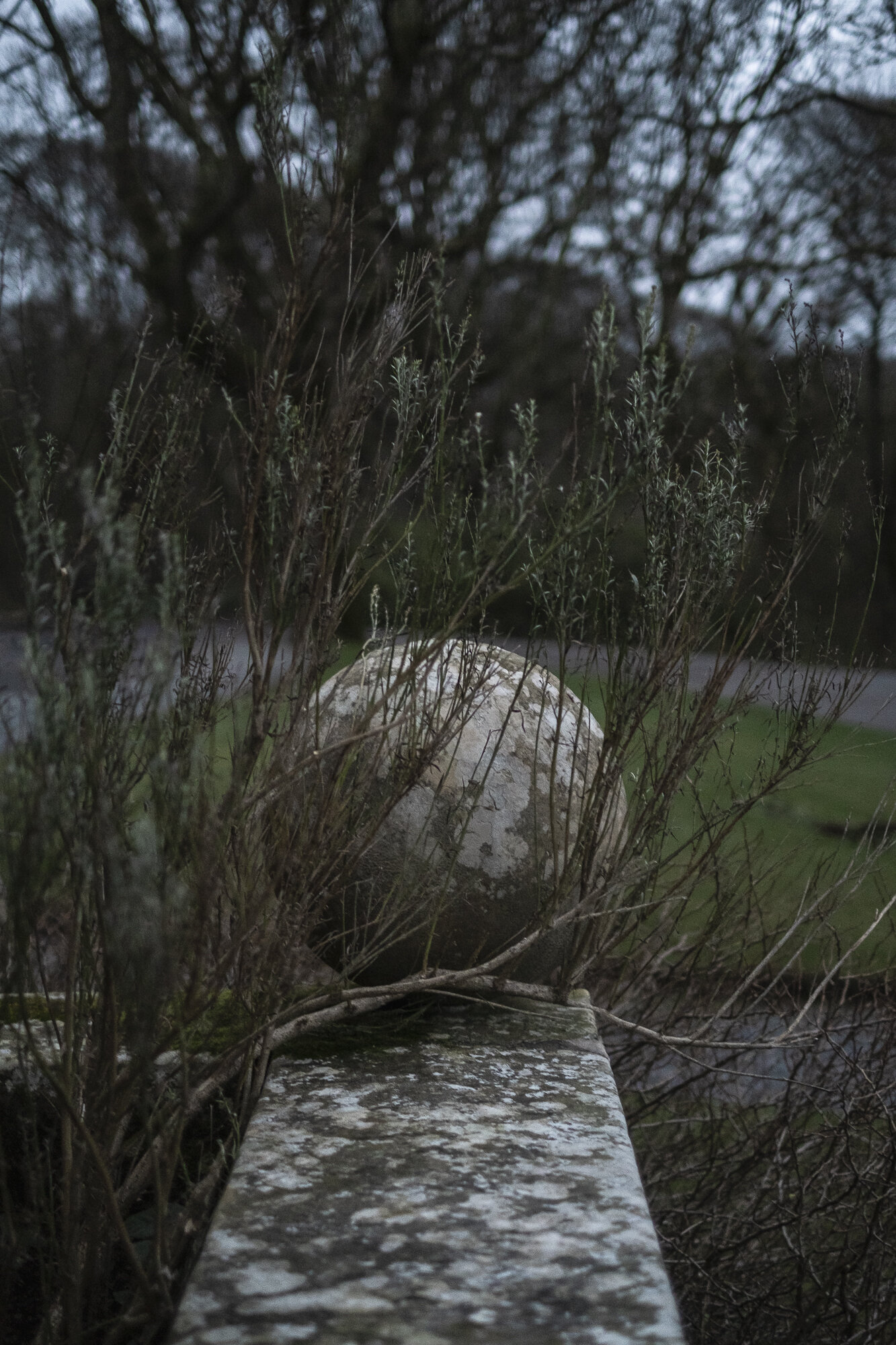Grand Designs
Introduction by Liz Schaffer - Photographs by Orlando Gili
In early January, when the light was fleeting and the weather fickle, I gathered a weather-weary crew of London companions and ventured north, in desperate need of merriment and magic. We made our way to Glasgow (one cannot travel to Scotland without paying homage to Charles Rennie Mackintosh), hired a car and followed the picturesque twists and turns of the Ayrshire coast, the road finally delivering us to Dunskey Estate - our singular, splendid and utterly divine long-weekend castle hideaway.
Part time slip, part playground, Dunskey Estate is a setting designed to awaken your inner child and will see your spirits soar. Once a towering, ivy-clad stately home, Dunskey Estate now specialises in parties, events, retreats and celebrations. Indeed, it is at its jubilant best when every room, all individually styled to combine modern comforts with chic, antique flourishes from the original home (the bathtubs alone took my breath away), is claimed by a gathering-loving group of revellers.
The castle is a playground, its communal spaces grand and inviting. Fires roar, the bar beckons, flower-graced tables call out for feasts (prepared by a private chef, the menu curated to suit individual whims and desires), and the furniture and decorations hail from decades past yet look anything but faded. Here, my group played dress ups, perused paintings, were lost in family albums, befriended loyal hound Beecher (the Dunskey mascot), invented games around the billiards table, discovered the tales behind objets d’art and were swept up in the moment.
Dunskey Estate is framed by woodland and gardens, and a network of walking paths twist their way through both, winding their way across fields, over creeks and ravines, and past lochs and petite doorways that no doubt lead to faraway kingdoms. The land changes its hues not only with the seasons - the fiery tones of autumn, the swathes of wildflowers - but throughout the day - the fading sun painting the landscape gold, frost clinging to the earth in the early morning.
Should the wind howl or snow fall, the castle calls, its cosy nooks perfect for book-and-whiskey-guzzling. But if the sun shines, head to the coast … immediately. Here you can picnic on the beach, wander by the sea, forage for seafood or simply work on that fabled Scottish tan. Time in Dunskey Estate is entirely your own. This is your wonderland, your escape, your home - a place of opulence and playfulness. The ideal antidote to the everyday.
To learn more, or make an enquiry, click here.
The Dunskey Story
Castles this wondrous inevitably come with a little history, Sarah Kelleher walks us through Dunskey’s past.
The story of antique-bedecked Dunskey Estate begins in 1900 when the estate was purchased by Charles Lindsey Orr Ewing and his second wife, Lady Augusta Boyle. (Orr Ewing’s first marriage to The Honourable Beatrice Hore-Ruthven ended in divorce when her inconvenient habit of leaving spouses and offspring at the drop of a hat came to light - fascinatingly, it appears she may have been the inspiration for the Bolter in Nancy Mitford’s novels).
Charles’s father, Sir Archibald Orr Ewing, had made his fortune via the production of fabric treated with the famous Turkey red dye, exporting his dyed and printed cotton cloth to India. It was this industrial heritage that enabled his son to purchase Dunskey Estate and have Dunskey House built to Scottish architect James Kennedy Hunter’s design; though tragically Charles passed away just before the house was completed in 1903.
The estate came with a walled garden and glasshouses, and grew to include an electricity supply company for the local parish of Portpatrick. The village itself is a scenic ramble from Dunskey Estate and home to the Portpatrick Hotel, which hosted revellers who ventured here to enjoy the heyday of the Scottish Riviera. Although the ravages of the 20th century (two world wars, death duties and the closing of the train line) took their inevitable toll on the estate, the bones of what had been remained and - owing to the vision and passion of the current generation of Orr Ewings (our wonderful hosts Ali and Anne) in looking ahead to the estate’s future whilst preserving its past - Dunskey Estate is flourishing once more.
Delve further back in the estate's history and a tale of myth and wonder is revealed. Dunskey Castle was built in the early 1500s on a clifftop south-east of Portpatrick, overlooking the narrowest point of the storm-tossed Irish Sea, and on the foundations of an even older castle that had been burnt down in retaliation for the alleged murder of Dionysus of Hamilton by William Adair of Dunskey. Reputedly haunted by the ghost of a nursemaid who dropped her infant charge from one of the castle windows, it is thought to have been a ruin by the late 1600s. By then, Dunskey Estate was in the hands of the Reverend James Blair, the newly appointed minister for Portpatrick. The old castle was stripped of dressed stone and timber, which was incorporated into the first Dunskey House, located where Dunskey Estate now stands.
With a history of ghosts, tangled family fortunes and set in a gloriously elemental landscape, the current chapter is sure to continue the compelling story of this captivating, otherworldly estate.






















